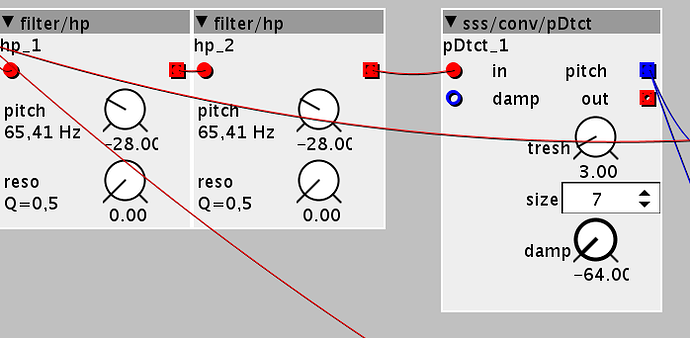Hey there I want to create a copy of this:
What this does it takes the output from a guitar hex pickup (per string pickup) and creates a subbass from the lowest note played.
I want to this with the lowest three strings on axoloti. So always the lowest played note is converted to pitch and feeds an oscilator.
I want to do this preferably with 1 audio Input. So my Idea was to hook up all three string pickus to relays and analog pins, to see which strings are being played. Then there would be a priority system in Axoloti always chossing the lowest played string. This would control either 3 relays or vactrols via the analog outputs so that only the lowest played string is fed into axoloti.
In order to achieve this here the practical part:
Can hook up the output of guitar pickup to an analog pin directly? Would a protection circuit like this be needed and work?
For the pickups there is two choices:
Self wound single coils with a Voltage output in the milivolt range.
Roland Gk2 active output, output Voltage unknown.

 I will get a guitar to midi converter to recognize the note being played, this will intern free up resources on an Axo. Will still analyze the audio in for conditions, but will add the note recognition of the guitar to midi converter as well. I did want to avoid this approach, I have considered many similar scenario's then those mentioned, but I do fear that I am missing out by compromising on not using one, and so this is why I have chosen to get one. From video's I have watched, it should more than meet my needs. For me it would cost the same as an Axo.
I will get a guitar to midi converter to recognize the note being played, this will intern free up resources on an Axo. Will still analyze the audio in for conditions, but will add the note recognition of the guitar to midi converter as well. I did want to avoid this approach, I have considered many similar scenario's then those mentioned, but I do fear that I am missing out by compromising on not using one, and so this is why I have chosen to get one. From video's I have watched, it should more than meet my needs. For me it would cost the same as an Axo. 



